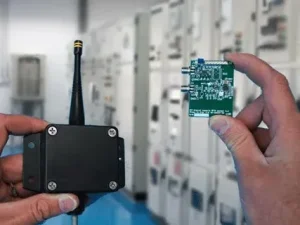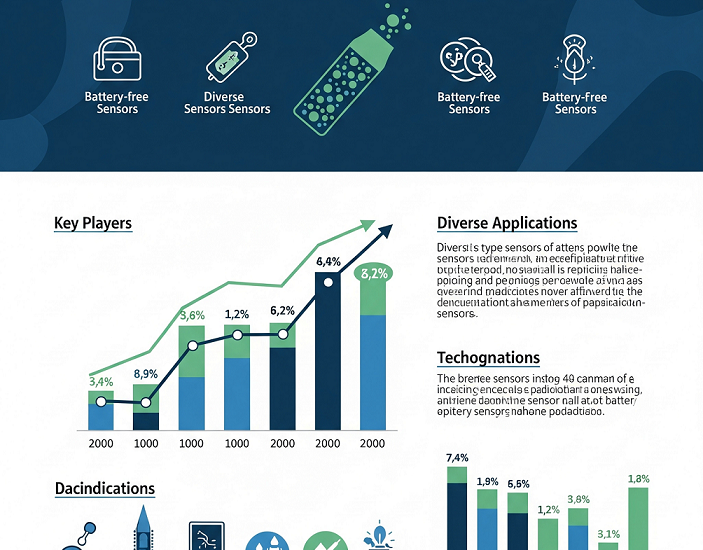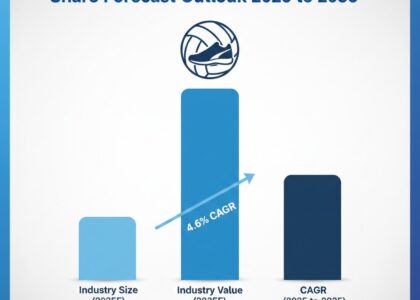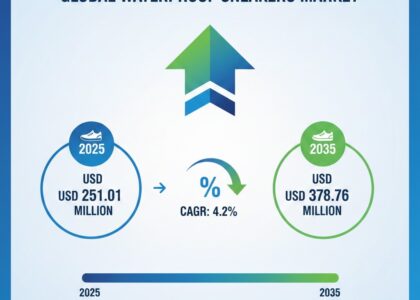The battery-free sensors market is set to grow significantly from 2025 to 2035, fueled by cutting-edge advancements in energy harvesting, the proliferation of IoT devices, and growing global emphasis on sustainability. Valued at USD 73.2 million in 2025, the market is projected to reach USD 512.8 million by 2035, expanding at a robust compound annual growth rate (CAGR) of 21.5% during the forecast period. This surge reflects a fundamental shift in sensor design, focusing on eliminating batteries to reduce environmental impact and operational limitations.
Battery-free sensors, also known as self-powered or energy-harvesting sensors, derive power from ambient sources like light, heat, vibration, or radiofrequency. These sensors are particularly useful in hard-to-reach or hazardous locations where battery replacement is impractical. Their application spans smart cities, industrial automation, environmental monitoring, agriculture, and healthcare, where wireless, maintenance-free operation is crucial. As industries adopt more intelligent systems, the need for continuous and autonomous data collection has placed battery-free sensing at the forefront of innovation.
The market’s growth is also underpinned by governmental and corporate green initiatives, aiming to minimize electronic waste and lower the carbon footprint of digital infrastructure. Alongside rising R&D investments, advancements in ultra-low-power electronics and materials are rapidly enhancing sensor efficiency, affordability, and integration capabilities.
Get Ahead with Our Report: Request Your Sample Now!
https://www.futuremarketinsights.com/reports/sample/rep-gb-17873
Market Trends
-
Surge in adoption of passive RFID and NFC-based battery-free sensors
-
Integration of energy-harvesting modules in IoT architectures
-
Development of smart, flexible, and printed sensors for wearables
-
Expansion of smart agriculture and environmental sensing solutions
-
Rise in demand for zero-maintenance sensors in industrial settings
Driving Forces Behind Market Growth
-
Increasing deployment of IoT-enabled infrastructure across industries
-
Demand for sustainable, eco-friendly sensor systems
-
Progress in energy harvesting and ultra-low power circuit technologies
-
Cost savings on maintenance and battery replacement
-
Regulatory push toward reducing electronic waste and promoting green tech

Challenges and Opportunities
-
Challenges
-
Limited energy availability in certain environments
-
Data transmission constraints without onboard energy storage
-
Integration complexities in existing systems
-
Low awareness and adoption in developing markets
-
-
Opportunities
-
Emerging use in structural health monitoring, logistics, and asset tracking
-
Development of hybrid systems combining multiple energy sources
-
Expansion into healthcare for continuous patient monitoring
-
Growing potential in smart cities and connected public infrastructure
-
Exhaustive Market Report: A Complete Study
https://www.futuremarketinsights.com/reports/battery-free-sensors-market
Recent Industry Developments
-
Launch of energy-autonomous sensor networks for smart building management
-
Collaborations between tech startups and utility companies to deploy passive sensors in grid monitoring
-
Introduction of printed and stretchable sensors in wearable health tech
-
Research breakthroughs in nanogenerators and thermoelectric materials
-
Government funding initiatives promoting sustainable sensor R&D in Europe and North America
Regional Analysis
-
North America: Leading in adoption due to strong IoT infrastructure, tech innovation hubs, and emphasis on green electronics.
-
Europe: Significant growth expected, supported by environmental policies, energy efficiency regulations, and increasing smart city deployments.
-
Asia Pacific: Fastest-growing region, driven by industrial automation, urbanization, and manufacturing advancements in China, Japan, and South Korea.
-
Latin America: Gradual uptake in sectors like agriculture, utilities, and smart transportation systems.
-
Middle East & Africa: Steady growth as smart grid and environmental monitoring projects gain traction, especially in urban centers.
About Future Market Insights (FMI)
Future Market Insights, Inc. (ESOMAR certified, recipient of the Stevie Award, and a member of the Greater New York Chamber of Commerce) offers profound insights into the driving factors that are boosting demand in the market. FMI stands as the leading global provider of market intelligence, advisory services, consulting, and events for the Packaging, Food and Beverage, Consumer Technology, Healthcare, Industrial, and Chemicals markets. With a vast team of 400 analysts worldwide, FMI provides global, regional, and local expertise on diverse domains and industry trends across more than 110 countries.
Contact Us:
Future Market Insights Inc.
Christiana Corporate, 200 Continental Drive,
Suite 401, Newark, Delaware – 19713, USA
T: +1-845-579-5705
For Sales Enquiries: sales@futuremarketinsights.com
Website: https://www.futuremarketinsights.com
LinkedIn| Twitter| Blogs | YouTube






